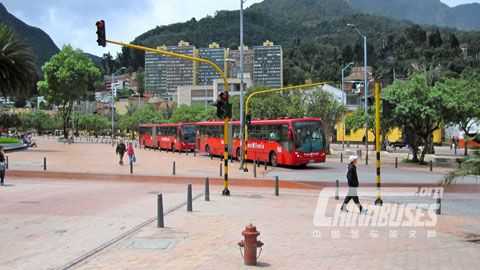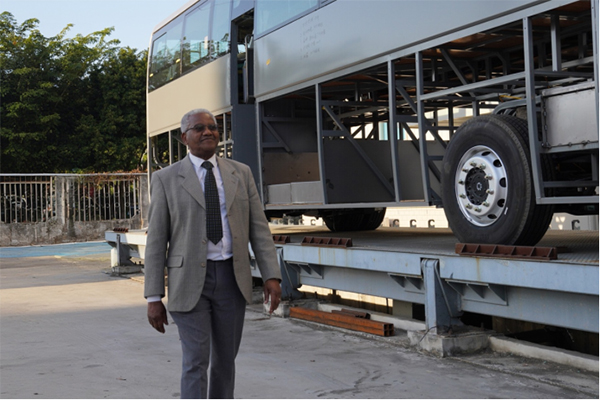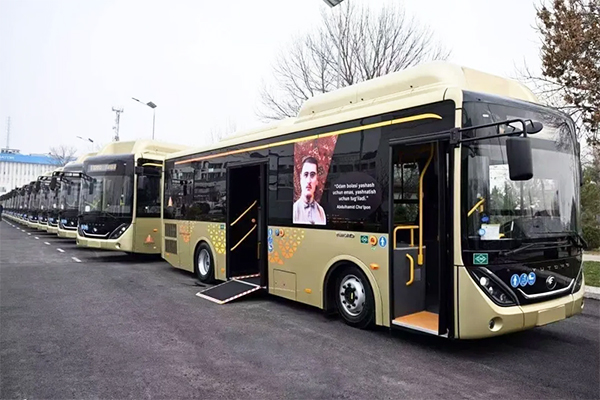Bogotá's upgraded bus system to greatly improve urban mobility
21 February 2012
www.chinabuses.org: More than a decade after its inception, Bogotá’s pioneering TransMilenio BRT system carries 1.6 million passengers every weekday, and has successfully reduced travel time for Bogotanos, as well as reducing pollution and improving safety. But the new Integrated Public Transport System (SITP) is about to take the success story of TransMilenio a step further by reducing a chaotic, decentralised network of 66 different private bus companies into a streamlined and efficiently coordinated system of 13 companies that will completely transform the culture of transportation in Bogotá.

However, only 26 percent of transit trips in the city are being made on TransMilenio, while the other 74 percent of transit trips are made on what is known locally as Collective Public Transport - a chaotic network of buses operated by thousands of individual owner-operators organised into 66 different private companies. In order to remedy this disorganised and inefficient public transport services, Bogotá's transportation network is about to undergo a transformation with the launch of the Integrated Public Transport System (SITP) at the end of this year.
The SITP represents a fundamental shift from a decentralised, chaotic network to a true coordinated system and will be modeled on the successful example of TransMilenio, with responsibility for providing service to be shared between 13 companies who were awarded zonal concessions through a competitive bidding process.
In addition, bus driver employment will become formal, with a fixed salary and bonuses for safe, effective operating replacing the era of survival of the fittest. SITP is expected to significantly reduce emissions in Bogotá. The oldest, most polluting buses will be taken off the streets as Bogotá reduces the size of its vehicle fleet by 30 percent and gradually upgrades to newer, more efficient models.
SITP will also increase the organisation of transportation in Bogotá, as passengers currently flag down buses as if they were taxicabs. After SITP is implemented, passengers will enter and exit buses only at the more than 2,000 designated stops that are scheduled to be built. The increased order on city streets will likely result in fewer deaths from preventable collisions.
In order to function effectively, the SITP will require a transformation of the culture of transportation in Bogotá. SITP’s operators will conduct extensive driver training, and TRANSMILENIO S.A. is planning an education campaign to communicate the message “user by user,” as SITP director Javiér Hernández puts it.
User information will also greatly improve, with SITP streamlining routes with feedback from local resident committees and developing strategies to ensure that people don’t feel “lost” in their own city. The improved user information and reliability of service, as well as an integrated fare card, are expected to improve convenience and ease of use for passengers. Implementing the SITP will entail some trade-offs, the largest of these being increased occupancy in buses.
SITP will transform Bogotá in more subtle ways, as well. For example, with the construction of formal bus depots, public space currently used for bus parking will be returned to city residents. Less aggressive driving and buses in better repair may improve the comfort of the ride. Bus operators will be held contractually responsible for maintaining adequate results on user satisfaction surveys; the link of these surveys to compensation will strengthen accountability for quality of service. Finally, many hope that the SITP will usher in a more humane era of what Carlos Cordoba, former director of Bogotá Cómo Vamos, calls “dignified public transportation.” While many things are still uncertain, one thing is for sure: after SITP, Bogotá will never be the same.
Source : www.chinabuses.org
Views:4243








